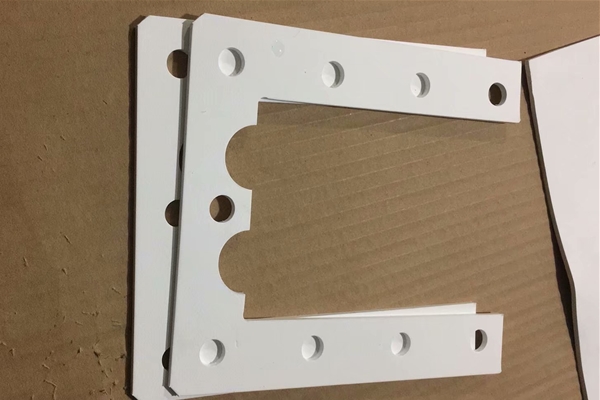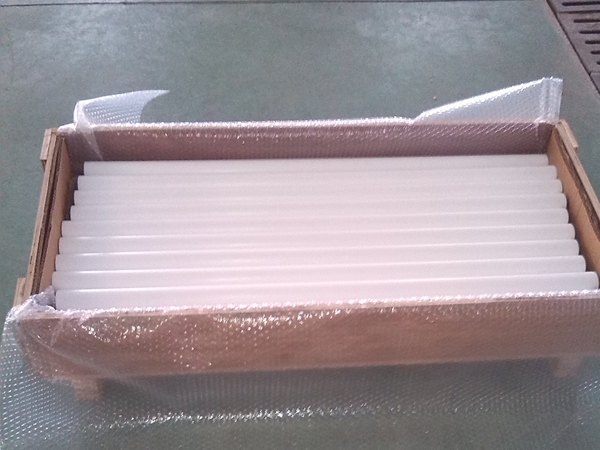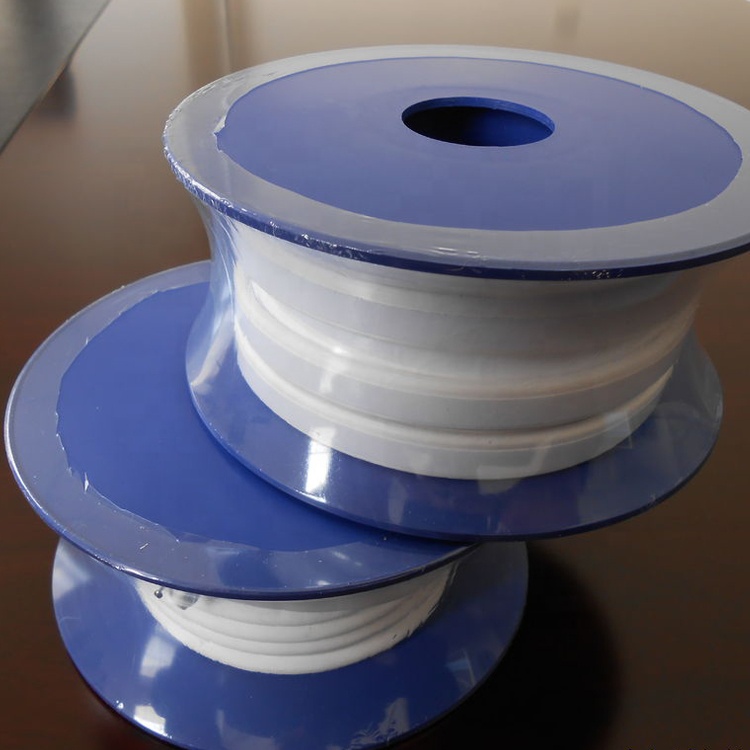Gland Packing (also called sealing packing or braided packing) is usually braided from relatively soft, flexible yarns and is installed in the stuffing box as a strip-shaped sealing element to prevent media leakage. In early applications, natural fibers such as cotton and flax were stuffed into the leakage path to stop fluid loss, mainly for the shaft sealing of water-lifting machinery. Because gland packing materials are easy to source, simple to process, and low in cost, this sealing method has been widely retained and is still used today. At present, gland packing is widely applied in centrifugal pumps, compressors, vacuum pumps, agitator shafts, and other rotary equipment in the petroleum, chemical and general industrial sectors.
Traditional braided packings are generally made by braiding a base fiber, followed by one or more impregnations with a binder, lubricant, and certain functional additives. However, two long-standing problems have not been effectively solved: (1) the friction coefficient of the braided packing against the shaft/sleeve is still relatively high; (2) the medium or braided packing itself can still cause corrosion on metal surfaces, which affects sealing performance and shortens the service life of pumps, valves, and rotating equipment. For example, a disclosed “anti-corrosion, lubricated, high water-based braided packing” improves lubricity by coating a lubricating layer on the surface of the body, thus reducing friction and improving product quality — but due to graphite’s own limitations, its anti-corrosion performance is still insufficient under high-strength or more demanding working conditions. Another disclosed “re-formable soft sealing packing” (containing chloroprene rubber, PTFE emulsion, polymer fiber, reinforcing filler, lubrication, plasticizer, and graphite) can improve corrosion resistance, but its heat resistance is poor. A further disclosed “fiber braided packing preparation method” uses double impregnation to get better penetration and density and to improve lubricity, but still shows inadequate anti-corrosion performance.
The demand in the industry clearly indicates that we need a preparation method that allows for the incorporation of graphene and/or carbon nanotubes (CNTs) into the braided packing matrix. This will enable the final braided packing to exhibit improved heat resistance, significantly enhanced corrosion resistance, and a lower friction coefficient.
This article provides such a solution: a packing, a method for preparing the gland packing, and a first impregnation liquid used for preparing the packing.
First Impregnation Liquid for Preparing Gland Packing
According to this process, the first impregnation liquid for making the braided packing comprises, in percentage by mass, the following components:
In this formula, the “synergistic functional additive” comprises graphene and/or carbon nanotubes.
The key idea is: by introducing graphene and/or carbon nanotubes into the first impregnation liquid, these nanocarbon materials can be brought into the inside of the braided fiber during the first impregnation, so that the final packing shows:
improved anti-corrosion performance,
improved heat resistance,
and a reduced friction coefficient.
1.1 Component Ranges
The binder accounts for 60–85 wt% of the first impregnation liquid (for example 62%, 65%, 68%, 70%, 72%, 74%, 76%, 78%, 80%, 81%, 83%, 84%).
The filler accounts for 10–30 wt% (for example 11%, 12%, 13%, 14%, 15%, 16%, 17%, 18%, 19%, 20%, 22%, 24%, 26%, 28%).
The synergistic functional additive (graphene and/or CNT) accounts for 0.01–1 wt% (for example, 0.02%, 0.04%, 0.06%, 0.08%, 0.1%, 0.2%, 0.4%, 0.6%, 0.8%, 0.9%).
1.2 Filler
The filler includes mineral powders and/or graphite.
The mineral powder can be one or a combination of:
mica powder, talc powder, kaolin, diatomite, clay, bentonite, montmorillonite.
In this process, the addition of mineral powder aids in dispersing graphene and/or carbon nanotubes, while also enhancing the strength, high-temperature resistance, acid-alkali resistance, and vibration-damping properties of the mix.
1.3 Binder
The binder may include one or a combination of:
PTFE emulsion,
PVDF (polyvinylidene fluoride) emulsion,
PFA (perfluoroalkoxy) emulsion.
The solid content of PTFE, PVDF and PFA emulsions is independently 15–65% (e.g. 20%, 25%, 30%, 35%, 40%, 45%, 50%, 55%, 60%), preferably 30–50% (e.g. 32%, 34%, 36%, 38%, 40%, 42%, 44%, 46%, 48%).
These fluoropolymer emulsions are widely used in the sealing, gland packing industries because they offer: excellent chemical inertness, very low surface energy, and good film-forming properties on braided fibers.
1.4 Optional Additives
The additive portion (by mass) contains: 0.5–1.5% de-emulsifier / anti-emulsifying agent; 1–8% water.
The de-emulsifier can be: tributyl phosphate, polyether demulsifier, polypropylene oxide-based derivatives, used alone or in combination.
Water helps adjust viscosity and impregnation depth.
1.5 Preparation of the First Impregnation Liquid
The preparation process is simple: First, mix the selected binder, filler, synergistic functional additive (such as graphene and/or carbon nanotubes), and any optional additives in the right proportions. Blend these ingredients thoroughly. If necessary, include a grinding step to ensure that the graphene and carbon nanotubes are properly dispersed. This step is important, as both graphene and carbon nanotubes tend to clump together. Achieving a uniform dispersion is essential for attaining low friction and high anti-corrosion performance in the final product.
2 Second impregnation after braiding
The preliminary product undergoes a second impregnation in a liquid at a temperature range of 15–35°C for 10–30 minutes (for example, 17, 20, 25, 30, 32, or 34°C for about 12 to 28 minutes). This second impregnation liquid consists, by mass, of: – 85–95% paraffin oil – 5–15% synergistic functional additive (which may include graphene and/or carbon nanotubes, CNTs)
That is: Paraffin oil: 85–95% (e.g. 86%, 88%, 90%, 92%, 94%), Graphene and/or CNT: 5–15% (e.g. 6%, 8%, 10%, 12%, 14%); Paraffin oil provides a stable, hydrophobic, lubricating outer film on the packing surface, while graphene/CNT present in this outer layer further increases antifriction and anticorrosion performance.
The method can be summarized as:
1, During braiding → first impregnation → drying at 90–110°C for 2–5 h → weight gain 30–40 wt% → get preliminary product;
2, Preliminary product → second impregnation at 15–35°C for 10–30 min → get the final braided sealing packing.
3, Structure and Distribution of Functional Additives
This two-step impregnation process enhances the performance of braided packing materials:
1. The first impregnation introduces graphene and/or carbon nanotubes (CNT) into the core of the fiber bundle. This reinforcement improves the packing’s anti-corrosion properties and high-temperature performance from within.
2. In the second impregnation, graphene and/or CNT are primarily deposited on the surface of the fibers, combined with paraffin oil. This treatment gives the contact and sliding surfaces of the packing low friction and anti-corrosion characteristics.
As a result, both the interior of the yarn and the spaces between the yarns are infused with graphene and/or CNT. This approach is significantly different from traditional PTFE/graphite-lubricated packings, where the solid lubricant mainly remains at the surface and can be easily washed away.
4, Role of Graphene and Carbon Nanotubes
Graphene: with a 2D lamellar structure, excellent surface shielding effect and high intrinsic strength, it provides outstanding corrosion protection, lubricity, and thermal stability — all of which are very valuable for sealing pumps, valves, agitators and compressors handling aggressive media.
Carbon nanotubes (CNTs): a 1D nanocarbon with tubular graphite-like walls, excellent mechanical reinforcement, electrical and thermal conductivity, and chemical stability. CNTs can significantly enhance anti-corrosion and self-lubricating properties. However, CNTs are well known to be difficult to disperse; in this process, mineral fillers and fluoropolymer emulsions are used together to improve the dispersion and anchoring of CNTs and/or graphene
5, Performance of the Final Packing
Thanks to the double-impregnation design, the gland packing/sealing packing offers several benefits:
Lower Friction Coefficient
The friction coefficient of the gland packing is ≤ 0.15, which is highly advantageous for shaft sleeves, agitator shafts, and valve stems. This low friction reduces startup torque and minimizes sleeve wear.
Higher Corrosion Resistance
The combination of graphene, carbon nanotubes, and mineral fillers protects both metal surfaces and the braided packing material. The acid loss is ≤ 22%, indicating strong resistance to acids and alkalis, making it suitable for chemical services.
Better Thermal Stability
Heat loss is ≤ 8%, meeting the requirements for medium-temperature sealing in chemical, petrochemical, and power applications.
Improved Service Life and Reliability
Functional additives are integrated within the fiber structure and at the fiber–fiber interfaces, making them less likely to wash out. This ensures that the sealing effect is sustained for a longer time, which translates into reduced maintenance and lower overall sealing costs for users.
6, Comparative Advantages over Traditional Gland Packings
Compared with traditional cotton/flax-based braided packings, single-impregnated PTFE packings, or packings that only incorporate graphite:
This process introduces nano-carbon (graphene/CNT) in a way that is actually dispersible thanks to mineral powders and fluoropolymer emulsions.
This advancement enhances not only lubricity but also improves anti-corrosion properties, high-temperature resistance, shock absorption, and chemical resistance. These braided packings are particularly suitable for sealing applications in: – Petrochemical pumps – Rotary equipment in chemical plants – Vacuum pumps handling corrosive media – Valves used with acids or alkalis – Mixers processing abrasive slurries. They are ideal for harsh industrial environments where ordinary braided packings tend to fail prematurely.
7. Summary of Technical Effects
This process offers several beneficial effects compared to prior art:
Nanocarbon Enhanced Formula
The first impregnation liquid contains graphene and/or carbon nanotubes (CNTs). Incorporating these materials into the packing improves heat resistance and corrosion resistance while reducing the friction coefficient. This enhancement leads to better packing quality and a longer service life, ultimately resulting in cost savings.
Mineral Powder Assisted Dispersion
Incorporating mineral powder as part of the filler significantly boosts the dispersibility of graphene and CNTs, further enhancing the packing’s mechanical strength, high-temperature resistance, and chemical resistance. Additionally, it provides a degree of vibration damping, which is particularly beneficial for pumps and agitators.
Dual-Impregnation Structure
The first impregnation fills the interior of the fibers, while the second impregnation coats the surface with graphene/CNTs and paraffin oil. As a result of both impregnation processes, graphene/CNTs are present inside the fibers, between fibers, and on the packing surface. This comprehensive distribution ensures that the final gland packing exhibits low friction, high anti-corrosion properties, excellent heat resistance, good lubricity, and stable sealing performance.
Performance Indicators
The performance indicators for this process are as follows:
– Friction coefficient: ≤ 0.15
– Heat-resistance weight loss: ≤ 8%
– Acid-resistance weight loss: ≤ 22%




